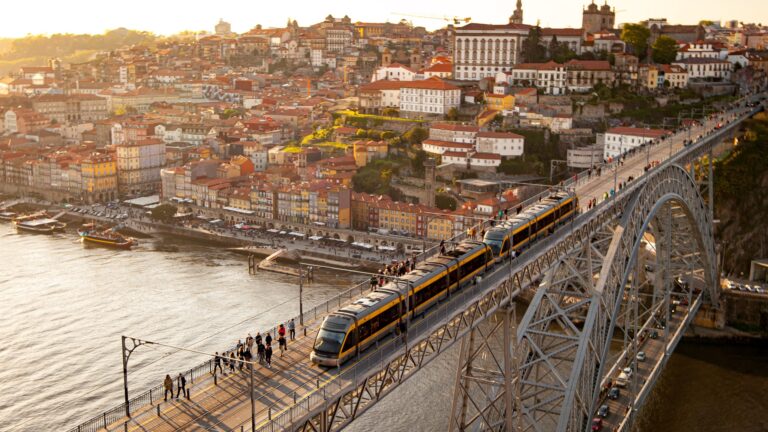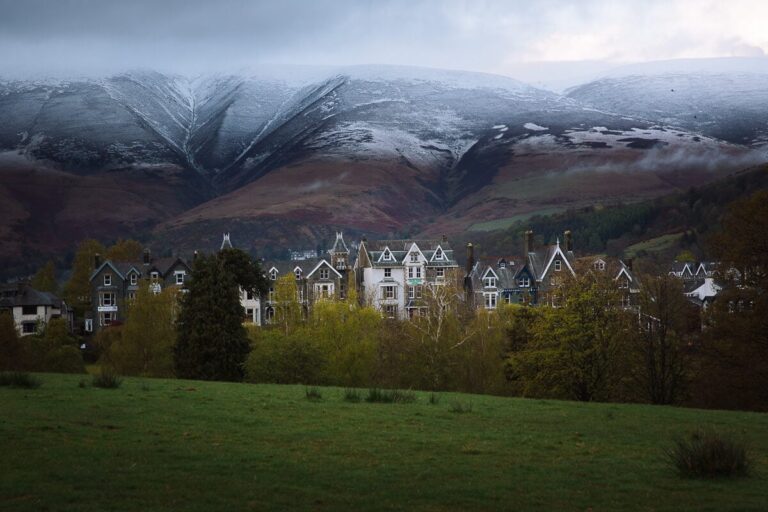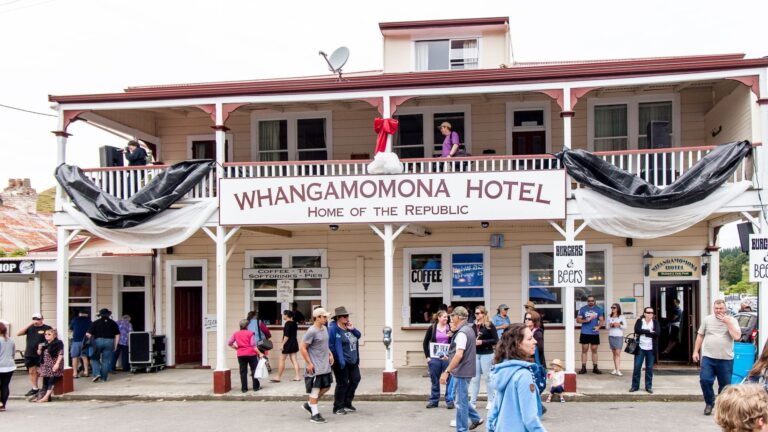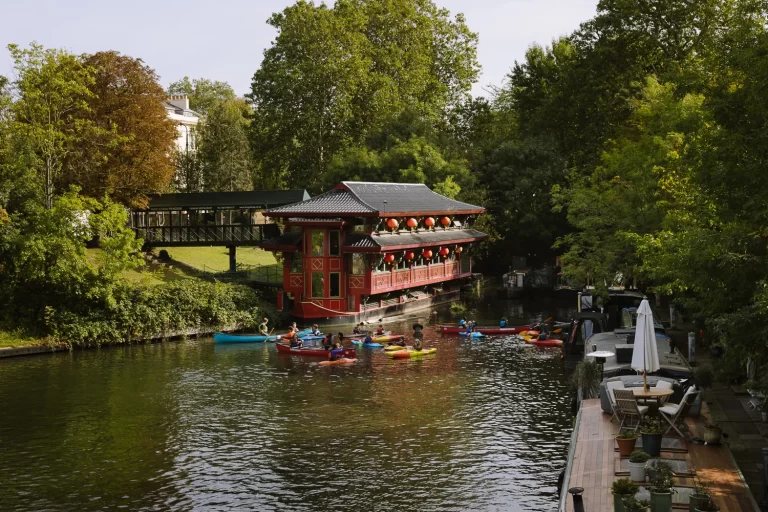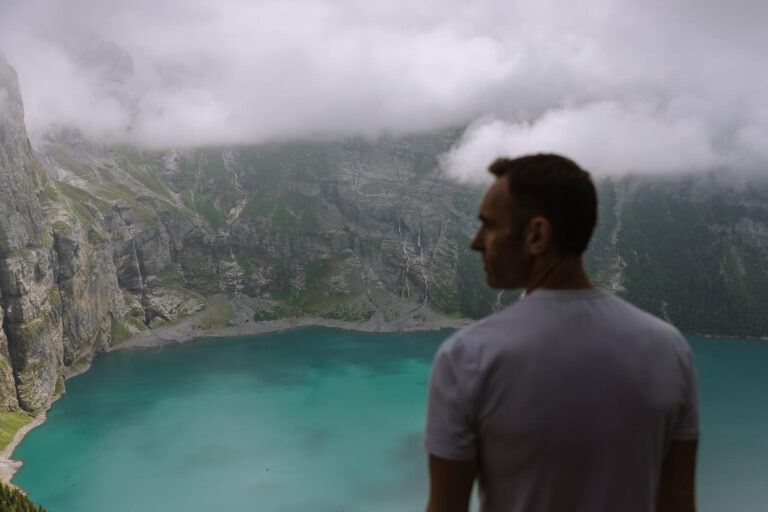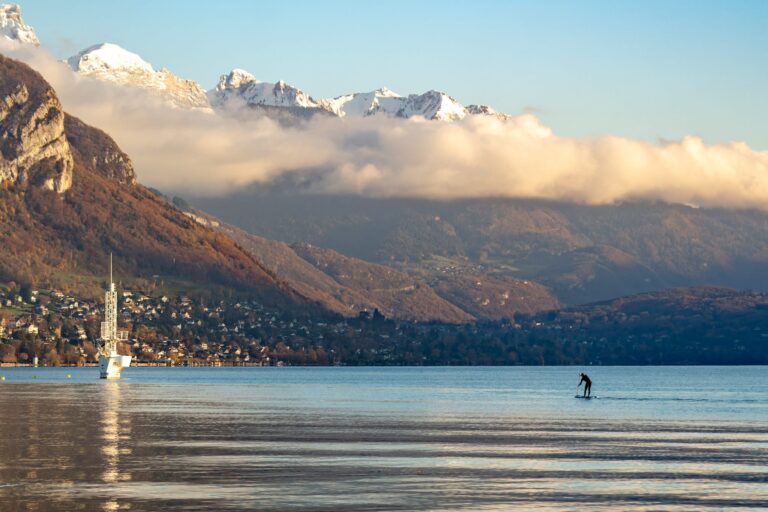19 Fascinating Ancient Ruins In Turkey | Anywhere We Roam
Greeks, Persians and Romans fought over the lands of modern-day Turkey for centuries, building some of the most remarkable buildings ever seen. Here’s our pick of the best ancient ruins in Turkey, each with its own story to tell.
The ancient ruins in Turkey are a remarkable journey through history; evocative places of myth and legend, of power and wealth. They range from ancient Greek towns perched precariously on steep hills, to imperial Roman capitals stretched across open plains.
Some, like Ephesus, demonstrate the wealth and power of a massive empire; others, scattered across remote outposts, tell Trojan stories of myth and legend. Gigantic temples, towering amphitheatres, defensive walls and endless piles of rubble unlock the story of the ancient world confined within the borders of modern-day Turkey.
WHAT IS ANCIENT?
Ancient History roughly covers the period from 3,000 BCE to 500 CE but it is often confused with Classical Antiquity which covers the period from the beginning of recorded Greek History in 776 BCE to the fall of the Western Roman Empire in 476 CE.
In this guide, we cover towns and villages from the early ancient period that passed from Greek to Persian hands before the successful invasion of Alexander the Great returned them to Greek rule once again. From the later ancient period, we explore once great cities and temples erected by the Roman Empire before the western empire fell and the capital moved to Constantinople (today’s Istanbul).
From the fall of the Western Roman Empire, we finish with a few ruins in Turkey that are no longer ancient, passing into the Byzantine period.
Booking your trip via the links on this page (or on our book page) will earn us a small commission, at no extra cost to you. Thanks for your support – Paul & Mark.

IN THIS GUIDE
BEST ANCIENT RUINS IN TURKEY
MAP / ANCIENT RUINS IN TURKEY
Turkey’s ancient ruins are predominately spread around the western side of the country. The best way to see all these sites with the flexibility you will want to enjoy them at your own pace is on a history-fuelled road trip.
We recommend booking your car rental with rentalcars.com who list vehicles from all the major providers so you can check prices across each of them. Before you take off, read tips on driving in Turkey.
For all the details on seeing the ruins and buildings in Istanbul read our 5-day itinerary and our guide to the best attractions in Istanbul.
1 – TROY
Uncover great legends in the most famous Greek ruin in Turkey
There is not a lot to see in Troy. There are no grand theatres or towering temples, no mighty walls or monumental baths. Even the sea that once surrounded this ancient hill town, has receded into the distance.
But what Troy has, is the mystery of legend. In the 8th century BCE, Homer wrote his famous poem the Iliad telling the story of how the Greek kings capture Troy after the ten-year Trojan War.
Wandering around the rubble of Troy it’s easy to envisage Homer’s tale. See the ramp and western gate through which Achilles was shot in the ankle and died and the line of blackened rocks where the Greek kings burnt the defeated city to the ground.
Walk in the footsteps of Alexander the Great, Xerxes, Julius Caesar and Augustus, who all came to Troy to honour the Greek heroes and legends of the past.
Troy Visitor Information / 8:30 – 19:00 Apr-Oct; 8:30 – 17:00 Nov-Mar | Price: ₺25 + ₺10 audio-guide + ₺10 parking | Location: 17100 Kalafat Köyü/Çanakkale Merkez
Read Next — Our Cappadocia itinerary

2 – APOLLON SMINTHEION
Drive country lanes in search of Greek myth
Strolling the lands south of Troy, a group of Cretans were attacked by an infestation of mice. Recalling an old prophecy which said they should settle where they were overrun by the ‘sons of earth’, they decided to stay and build a temple. They named it Apollo Smintheus (Apollo the Slayer of Mice).
In the 8th century BCE, according to Homer, the daughter of the local priest at the temple was captured by King Agamemnon during the battle for Troy. The priest prayed in anger to the ‘Slayer of Mice’ and the god sent a plague over the Greek army.
The temple that sits on the site today was built by the Romans in the 2nd century. Leaving the motorways and meandering the winding country lanes of the Biga Peninsular, getting to Apollon Smintheion is a beautiful drive through a landscape that has barely changed since ancient times.
Apollon Smintheion Visitor Information / 8:00 – 20.00 Apr-Oct; 8:00 – 17:00 Nov-Mar | Price: ₺5 | Location: 17880 Gülpınar Bucağı


3 – MILETUS
Discover a grand city design in this sprawling Greek ruin
Populated as early as 3500 BCE, Miletus became a Mycenaean stronghold from 1450 to 1100 BCE and later one of the greatest Greek cities in the east. Built on a prosperous wool trade, it developed into a bustling city and seaport which in the 6th century became a hub for literature, science and philosophy.
Over the next couple of hundred years, it would switch between Greek and Persian rule, reaching its apex shortly after Alexander the Great recaptured it in 334 BCE.
Today, it is a sprawling complex offering a grand overview of all these changes. Stroll the grid system of streets (which became a template for future Roman cities); explore the Greco-Roman theatre that is still in excellent condition; and watch the Ionic Stoa of the Sacred Way reflected in the (often) flooded plains.
Miletus Visitor Information / 8:30am – 7pm (summer); 8:30am – 5pm (winter) | Cost: ₺12 + ₺5 for the museum.

4 – LYCIAN ROCK TOMBS
Ancient rock-cut tombs and riverside ruined cities.
Before Alexander arrived in southern Turkey, Lycians dominated the area. Experts in stonemasonry, they built tombs hewn into the rock. Believing the souls of the dead would be transported to the afterworld by magic winged sirens, many were constructed into coastal cliffs. Hundreds of these rock-cut tombs still survive today.
The most famous is the Tomb of Amyntas overlooking the town of Fethiye. Others can be found next to the theatre in Myra, but the most fun to visit are at Dalyan.
It’s a wonderful boat ride and a short walk to explore both the rock-cut tombs and the ancient city of nearby Kaunos. The views from the city walls taking in the winding river meandering out to sea is lovely.
Read Next — Amazing things to do in Cappadocia


5 – HERAKLEIA AD LATMOS
Swim to island ruins surrounded by rural farming life
The village of Kapıkırı sits on the banks of Lake Bafa under the towering summit of Mount Latmus where villagers live a traditional way of life supported by subsistence farming.
Scattered around the village are the remnants of Herakleia ad Latmos, one of the most evocative and picturesque ancient ruins in Turkey. The original city walls, built around 300 BCE, extended for 6.5 kilometres and supported 65 towers. Today, they remain some of the best-preserved walls in the ancient world. The Temple of Athena occupies a stunning position perched on a promontory overlooking the lake.
Herakleia is a much less-visited ancient ruin in Turkey and the town of Kapıkırı is a wonderful excursion into a very rural and local part of the country. Swim across a small section of the lake to an island where ancient foundations can still be found. Grab a beer from the bar on the beach and soak up this unique Turkey ruin experience.
Read Next — 2-week Turkey Itinerary


6 – ASSOS
Magnificent views from the ancient home of great philosophers
Assos may be a small town perched on a hill but it packs a historical punch. When Aristotle left the Platonic Academy in Athens he settled in Assos and opened an academy. Working with other philosophers, he explored the nearby lagoons of Lesbos researching zoology and biology, before heading to Macedonia to tutor Alexander the Great.
Today the magnificent views over the Mediterranean are complemented with well-preserved ruins. Six of the 38 columns of the Temple of Athena (530 BCE) are still standing, as is the 4th-century city wall and gate, as well as the 3rd-century theatre built for 5,000 people.
There is a market along the road to the town with several cafes welcoming guests with hearty Turkish hospitality. It’s a wonderful way to experience Turkey’s ancient ruins.
Assos Visitor Information / 8am – 8pm (summer); 8am – 5pm (winter) | Price: ₺10

7 – PRIENE
A Greek hill town almost untouched by Roman influence
Priene was purpose-built, according to plan, as a deep water port. A succession of terraces on a steep hill rose from the bay to a height of 380 metres. Designed on a grid layout which was divided into 80 blocks, shared between four districts, the walled centre had a small but dense urban population.
However, the city only lasted for a few centuries. The bay silted up, the port became inaccessible, and the people abandoned the city.
Today it is one of the best examples of Greek city planning and it’s quite possible to have the entire site to yourself. Don’t miss the Temple of Athena and its five remaining pillars. Sit on the “throne” at The Bouleuterion and summon the power of ancient heads of state.
Priene Vistor Information / 8:30am – 7:30pm (summer); 8:30am – 5pm (winter) | Price: ₺10 | Location: Priene is near the village of Güllübahçe.



8 – THE TEMPLE OF APOLLO
Be overawed by the sheer size of the Temple of Apollo
As you approach the Temple of Apollo it doesn’t seem that impressive. Only three columns are still standing with a pediment across the top of two of them. It is not particularly ornate, nor does it have a dramatic location.
But as you descend into the temple, the reason behind its status becomes obvious. Apollo is colossal. Unlike many of the other historic sites in Turkey, the Temple of Apollo shows the size, power and might with which the Romans honoured their Gods.
The temple was built on a platform over 5,500 square meters, upon which rested 122 columns each with a diameter of 2.5 meters. The walls of the temple itself rose 28 metres above the ground. The whole site is a monstrous undertaking of enormous scale.
The columns rise like mighty redwoods into the sky. One fallen column which now rests on the ground, gives you the opportunity to fully appreciate the scale of this incredible Roman ruin in Turkey.
Temple of Apollo / 08:30 – 18:30 Apr-Oct; 08:30 – 16:30 Nov-Mar | Price: ₺10 | Location: Yenihisar Mh Didim


9 – TEMPLE OF ARTEMIS
See a column from one of the 7 Ancient Wonders of the World
Of the 7 Wonders of the Ancient World, only the Great Pyramids of Giza are still standing. However, it’s hard to pass up the opportunity to see one that still has a tiny fragment of its former glory.
The Temple of Artemis was built and destroyed three times, with the final version beginning construction in 323 BCE. It would become the largest temple in the ancient world. A platform measuring 137 metres long, 69 metres wide and 18 metres high supported over 127 columns. According to the Acts of St John, the apostle preached here many times.
All that stands today is a single column assembled from the rubble that was found at the site. It takes a lot of imagination to envisage the rest, but its iconic status makes this a Turkey ruin well worth popping into.
Temple of Artemis / 8am – 7pm | Price: Free | Location: Atatürk Mh., Park İçi Yolu No:12, Selçuk


10 – SAGALASSOS
Head to the mountains for these evocative ancient ruins in Turkey
From Antalya, it’s a two-hour drive over rugged hills and wild valleys to reach Sagalassos. For the last twenty minutes, a windy road twists high up into the Western Taurus mountains until the ruins come into sight at a height of 1,500 metres. It may take a bit of effort to get here, but the remote and inaccessible location means it wasn’t looted after its demise and much of the site remains in good condition today.
Already a wealthy city when Alexander conquered it in 333 BCE, most of the greatest monuments were built by the Romans. The theatre is a wonderful mess of broken blocks and tiered seating, while the imposing arch of Emperor Claudius rises over the lower town. The Heroon (hero’s monument) is a multi-story building thought to have been built by Alexander the Great in honour of himself.
But the most magnificent is the Nymphaeum, an array of ornate fountains built around the upper agora (market square). The statues may have been replaced by replicas, but it does little to detract from the majesty of this place.
Sagalassos Visitor Information / 8:30am – 5:30pm | Price: ₺10
Read Next — The best Cappadocia hikes


11 – PERGAMON (BERGAMA)
Wander through an atmospheric hill town housing the Temple of Trajan
Overlooking the Caicus River which provided access to the Aegean Sea, Bergama (later Pergamon) was an important Greek cultural centre at the top of a hill. Seizing on its strategic and easily defensible position, the Romans briefly made it their first capital of Asia Minor.
Today, this sprawling ruin decaying on the hillside is a testament to its mighty past. High on the hill, the reconstructed Temple of Trajan was dedicated to the emperor after he was awarded God-like status by the Roman Senate. Nearby the Theatre of Pergamon is said to be the steepest in the world and provides spectacular views over the countryside.
Past the scraps of columns abandoned in the overgrown grass lies the region’s most famous relic: The Altar of Pergamon. A shadow of its former self, the altar has been stripped bare and its impressive marble facades now reside in the Pergamon Museum in Berlin. Nonetheless, the whole site still offers an intriguing insight into how Greek city-states became places of Roman wealth and power.
Bergama Acropolis / 8am – 6:45pm Apr-Oct; 8am – 4:45pm Nov-Mar | Price: ₺20 + ₺20 cable-car | Location: The cableway station is located at Kurtuluş Mahallesi, 5. Sk. No:13



12 – EPHESUS
Stare in wonder at the best Roman ruin in Turkey
With the Roman Empire near its zenith and defensible hill towns no longer necessary, the Roman Emperor Augustus moved the capital of Asia Minor from Bergama to Ephesus. Money and power flooded in creating what is now the jewel in the crown of ancient ruins in Turkey
The most iconic Roman ruin in Ephesus is the Library of Celsus. Built in 125 CE, it once held nearly 12,000 scrolls. The bas-reliefs and statues covering the façade are intricate and extremely well-preserved.
Nearby are the magnificent Temple of Hadrian, the Odeon, and a theatre which was the largest in the ancient world holding an estimated 25,000 people.
Our highlight at Ephesus was the covered terrace houses. These Roman homes were partially destroyed by an earthquake in the 3rd century CE, but the remains are in exceptional condition. Preserved under a large roof, with glass walkways above the houses, the frescoes and mosaics that line the walls and floors are incredible.
Ephesus / 8am – 6:30pm Apr-Oct; 8am – 4:30pm Nov-Mar | Price: ₺40 + ₺10 parking at south gate +₺20 extra for Terraced Houses (which close at 18:00) | Location: Atatürk Mh., Uğur Mumcu Sevgi Yolu, 35920 Selçuk


13 – APHRODISIAS
Admire the incredible marble reliefs from the Temple of Roman Emperors
Aphrodisias is an ancient Greek town deep in the Anatolian hinterland. It was absorbed into the Roman Empire and most of the site dates from Roman times. Many ruins are in good condition, particularly the Tetrapylon, Odeon and the huge stadium.
The highlight is the Sebasteion, built between 20 CE and 60 CE. Meaning the Temple of Emperors, it was originally a magnificent three-storied building with Doric, Ionic and Corinthian columns. Much of it is now in ruins, however, many of the marble reliefs that adorned the walls have survived.
The reliefs are now housed in a purpose-built room attached to the on-site museum. They tell the stories of the triumphs and conquests of gods and emperors. An hour spent wandering around the museum is a tour de force of myth, legend and truth and easily makes Aphrodisias one of the best Roman ruins to visit in Turkey.
Aphrodisias / 8am – 7pm Apr-Oct; 8am – 5pm Nov-Mar | Price: ₺35 | Location: Geyre Mahallesi, 09385 Karacasu


14 – HIERAPOLIS – PAMUKKALE
Take a natural warm bath beneath the Roman ruin of Hierapolis
The thermal spa of Hierapolis was established at the end of the 2nd century BCE to take advantage of the healing benefits of a natural spring. The site was destroyed by an earthquake in 60 CE and rebuilt to become an important religious centre in the eastern Roman empire.
Over the centuries as the warm waters bubbled out of the ground and made their way down the hill, calcite was deposited on the rock creating the cotton-candy terrace of Pamukkale. Today it is an eerie, otherworldly sight where you can still soak in the rich waters while being overlooked by Roman statues.
The Roman ruin around the baths is extensive and could take hours to see. The highlights are the grand theatre, richly decorated with religious iconography; the tomb of St Philip hidden in the swaying grasses; and the round turreted Frontius Gate.
Take a hike around the ruins, soak in the natural pools, and watch the sun go down on the eerie calcite terraces and you’ll have had a great day among these Turkish ancient ruins.
Hierapolis Visitor Information / 6:30am – 8pm | Price: ₺100


15 – ASPENDOS
Witness the most complete Roman theatre ruin in Turkey
Aspendos was built during Roman rule on the banks of the Eurymedon River. With its strategic location, it led world trade in salt, oil and wool, bringing great power and wealth to the city.
Dominating the site is the best-preserved theatre in antiquity. Partially built into the hill, the stage is a whopping 96 metres long. It is estimated that the theatre seated 12,000 people. The columns that supported the stage are still in place with only the wooden ceiling now missing.
Being only 40 kilometres from the large Turkish city of Antalya, it’s a little more commercial than the other Turkey ruins. Performers dress up as Roman guards or gladiators, hoping to charge for a photo. But beyond the tawdriness lies a remarkable building and one of the finest Roman ruins not only in Turkey but the world.
Aspendos Visitor Information / 8am – 5pm | Price: ₺100
Read Next — What to do in Istanbul

16 – VALENS AQUEDUCT
Admire this still almost complete Roman aqueduct
The Valens Aqueduct was commissioned in the 4th century by Emperor Valens as a way of supplying water to a desperately dry Constantinople. Considered one of the great engineering achievements of the ancient world, the aqueduct carried water from over 120 kilometres away via 450 kilometres of conduits.
In its heyday, the Valens Aqueduct connected over 100 cisterns and 30 bridges. The most visible section today is the 971-metre bridge that connects the third and fourth hills of Istanbul passing over Ataturk Boulevard.
The aqueduct still cuts an impressive figure in the city and it’s a great area of Istanbul to explore. You can read more in our 5-day Istanbul itinerary.

17 – BASILICA OF SAINT JOHN
The ruins of an incredible Byzantine Church
Perched on a hill just outside Ephesus, the Basilica of St John is a Byzantine Church and the alleged resting place of St John. He spent his final days in Ephesus and is believed to have written his gospel on this hill before dying aged 100 years old.
As Christianity spread, a monumental tomb was built over his grave and in 350 CE a basilica with a wooden dome was built over the tomb. Then in 6th century CE, Justinian and Theodora knocked down the basilica and built a 6-domed church that survived for almost 800 years, before being destroyed by a large earthquake. These are the impressive Turkey ruins you see today.
It’s easy to get an idea of the scope and size of the church which would be the 7th largest in the world if it existed today. Some original frescoes, almost hidden from view closed gate, give a glimpse of the grandeur the church once had.
Basilica of St. John / 8:00 – 18:30 Apr-Oct; 08:00 – 16:30 Nov-Mar | Price: ₺10 | Location: Atatürk Mh., St. Jean Cd., Selçuk

18 – TERMESSOS
Stroll around untouched ancient ruins with an evocative crumbling theatre
Set 1150 metres high in the Goulluk Mountains, Termessos is one of the most fascinating and atmospheric ancient ruins in Turkey.
The original holders of the land, the Luvi, were the first people to settle the mountain city and they were later followed by the Greeks then the Romans. The oldest ruins still visible on the site today date back to the Greek (Hellenistic) Period.
The site includes a gymnasium where boys were trained to attend the Olympic Games, and the Paleastra, a sports centre for everyone else. The main attraction, however, is the incredible theatre built into the side of a mountain. It had a capacity for 4,000 people and today it’s well-preserved but crumbling just enough to be thoroughly atmospheric.
Archaeological works have never taken place on the site, so Termessos remains completely untouched. There are a few barely discernible walking paths, but you are free to roam as you please.



19 – SIDE
Stroll ancient ruins scattered throughout a modern village
Side is an ancient town around 1 hours’ drive from Antalya. The ruins at Side date back to the 2nd century and they are a fine example of the Golden Era of Roman construction.
The city contains the remains of a theatre which had a capacity of 9,000 people, and a massive marketplace (now mostly ruined) which was used to buy and sell slaves.
Side is set around a new town which today has tourist restaurants and souvenir shops over an extensive set of glass walkways to display the ancient ruins which were built over by subsequent generations.
It’s free to stroll around most of Side except for the Museum and the Theatre for which you need to purchase a ticket.


BYZANTINE RUINS & BUILDINGS IN TURKEY
While the fall of the Western Roman Empire in 476 CE marked the end of ancient times, the Eastern Roman Empire continued for almost another millennia. This shift in power marked the beginning of the Byzantine era. Based around Constantinople (now Istanbul) it built some remarkable buildings as early as the 6th century.
BASILICA CISTERN
This underwater cistern in Istanbul was built in the 6th century CE to store water for the palaces of the Caesars. The eerily lit underground room, held up by 336 marble columns, is 138 metres long, 65 metres wide and 9 metres high. Keep an eye out for the two Medusas heads – one on its side and the other upside down – at the base of two of the columns near the back. Basilica Cistern is temporarily closed for restorations, but an immersive experience is playing at the Theodosius Cistern.
HAGIA SOPHIA
Possibly the greatest historical building in the world, the Hagia Sophia was built in 537 CE in Constantinople as the largest church in the Byzantine empire. When the Ottomans captured the city in 1453 CE it was converted into a mosque until 1935 when it reopened as a museum. In 2020, under the direction of the Turkish government, Hagia Sophia was converted back to a mosque. Exploring the building is an intriguing look through history across empires and religions.
CHORA CHURCH
Originally built in the 4th century outside the main city walls of Constantinople, the majority of the remains of this remarkable church now date to the 11th century. What makes it unique is the completeness of its internal decoration. Ornate mosaics and frescoes almost entirely cover its walls and ceilings. Converted to a mosque in 2020, isn’t another unmissable thing to see in Istanbul for its connection with history.



PLANNING YOUR TURKEY TRIP
Turkey is a fascinating destination with ancient ruins, magical landscapes and one of our favourite cities in the world. Here are more of our guides about this wonderful country.
If you found this guide useful, we’d love it if you could follow us on Instagram.
The best things to do in Cappadocia
The best things to do in Istanbul
All you need to know about driving in Turkey
Our 3-day Cappadocia itinerary
STAY IN TOUCH
Stay up to day with our travels on Instagram and get semi-regular updates directly to your inbox via our newsletter.
SHARE THIS GUIDE
If you found this guide useful, please share it to your social media or pin it to your Pinterest boards.



